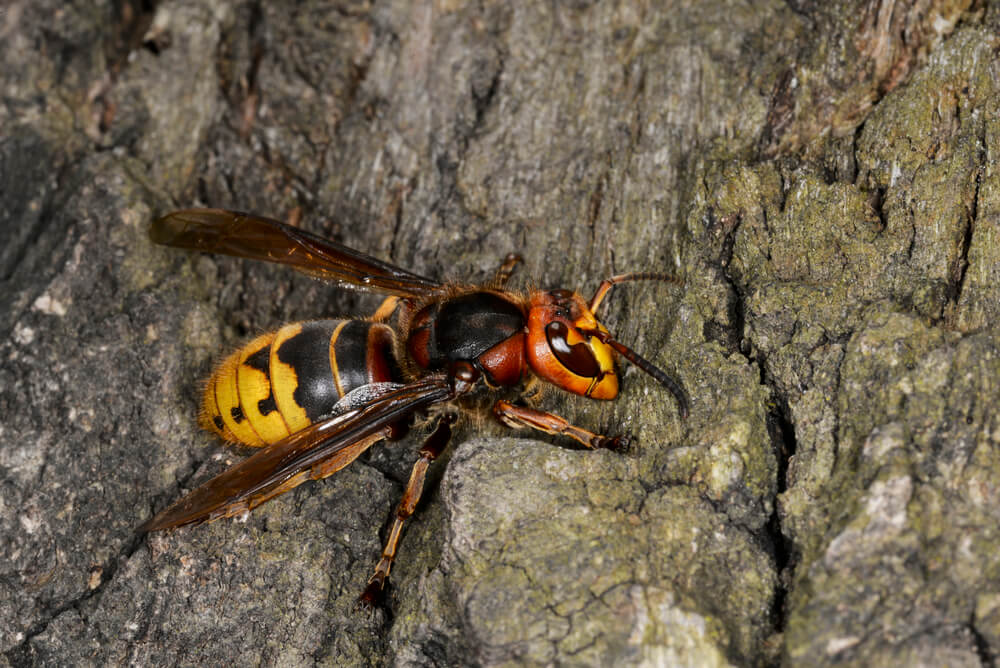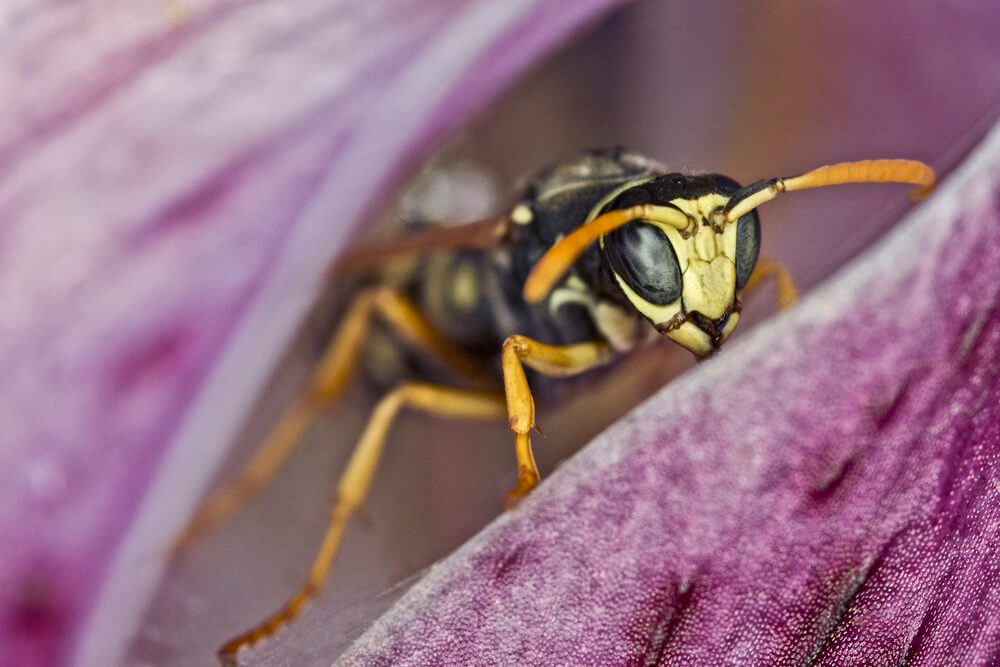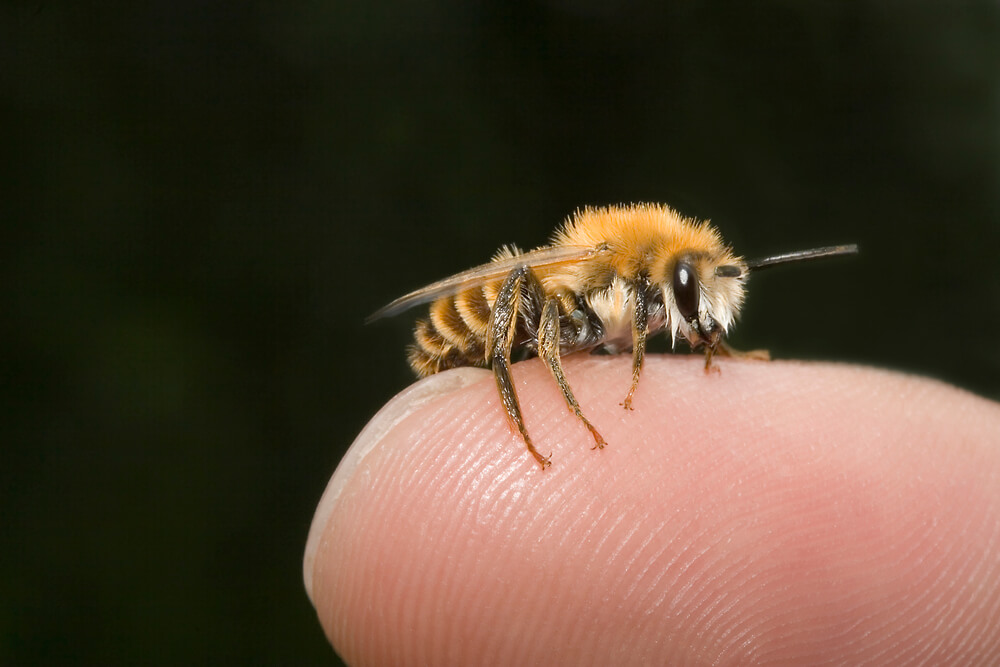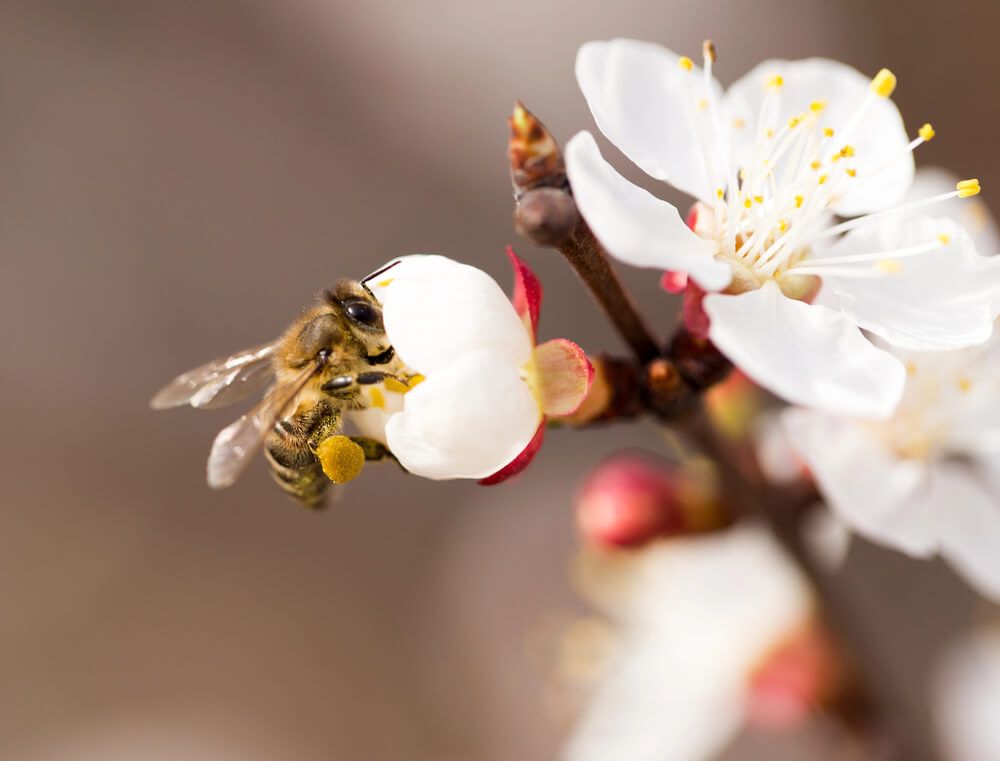Table of Contents:
What Do Hornet’s Nests Look Like?

European hornet (Vespa crabro L.) nests are gray and paper-like in appearance. They can be basketball-sized or larger, depending on the size of the hornet colony.
The inside of the hornet’s nest contains hexagonal combs used to raise baby hornets.
European hornets typically nest inside hollow trees. However, they sometimes inhabit man-made structures like houses, sheds, and barns.
With that in mind, European hornets prefer nesting in concealed holes or cavities for protection. As a result, you may not see the hornet nest itself but instead see dozens of hornets flying around a specific area. High hornet activity indicates there is a nest nearby.(1, 2)
But keep in mind:
European hornet nests are not to be mistaken for honey bee nests. They are different insect species.
But like hornets, honey bees sometimes nest inside cavities of homes, sheds, barns, and other man-made structures. European hornets have a color similar to that of honey bees. But, honey bees are notably smaller and fuzzier than hornets.(3, 4)
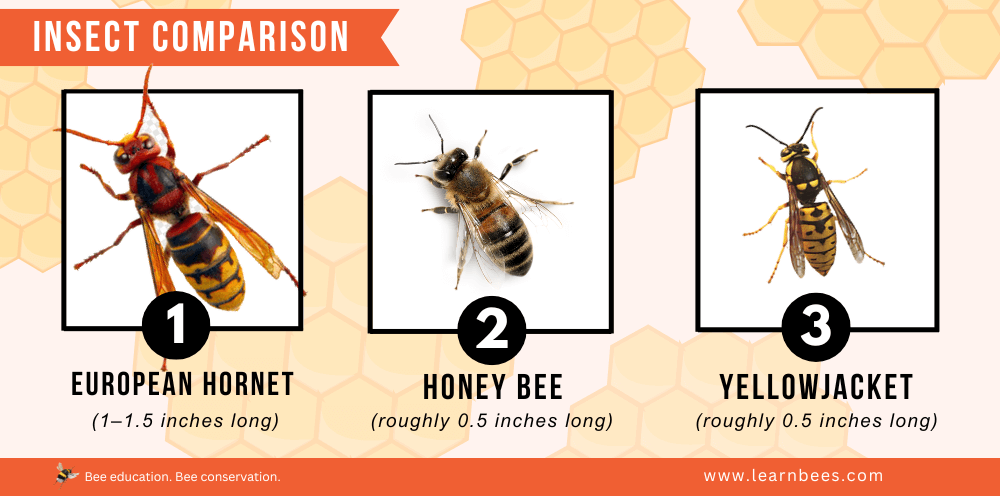
Chances are, if you see a flying insect and think, “Wow, that’s a large bee!” then it’s probably a European hornet instead of a honey bee. European hornets are hard to miss due to their large size.
Additionally, European hornets are the only true hornet species found in the United States.
Other insects, like bald-faced hornets, are actually not hornets. Instead, they’re wasps that are colloquially known as “bald-faced hornets.” The correct name for them is aerial yellowjacket (Dolichovespula).(5)
Aerial yellowjackets are also known as “sandhills hornets” and “common yellow hornets.” But again, they are technically wasps instead of hornets – despite their nicknames.
How Long Will a Hornet’s Nest Last? 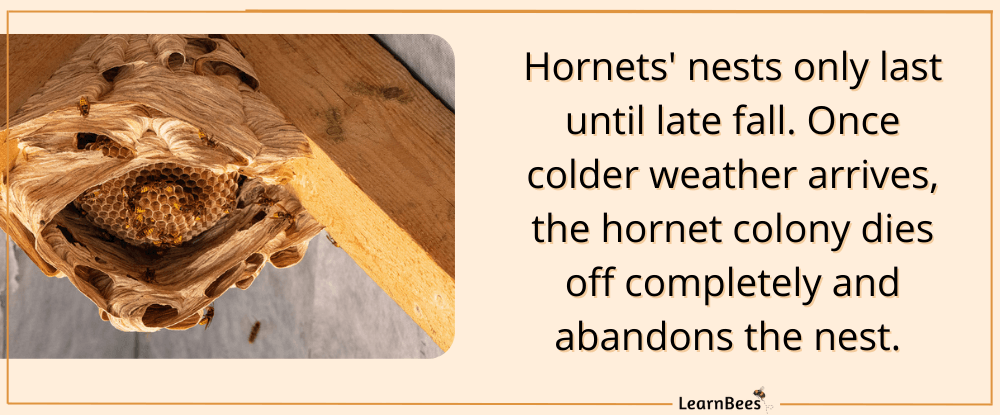
Hornet nests last from spring until fall.
As fall approaches, the worker hornets slowly die off due to cold weather, leaving an empty nest behind.
The only surviving hornet is the queen, who hibernates alone until spring arrives.
Late fall and winter are ideal times for homeowners to seal any holes or large crevices that hornets can inhabit. This prevents freshly emerged queens from building a new nest next spring. Additionally, it allows homeowners to resolve the issue without agitating an active hornet colony.
Should I Destroy a Hornet’s Nest?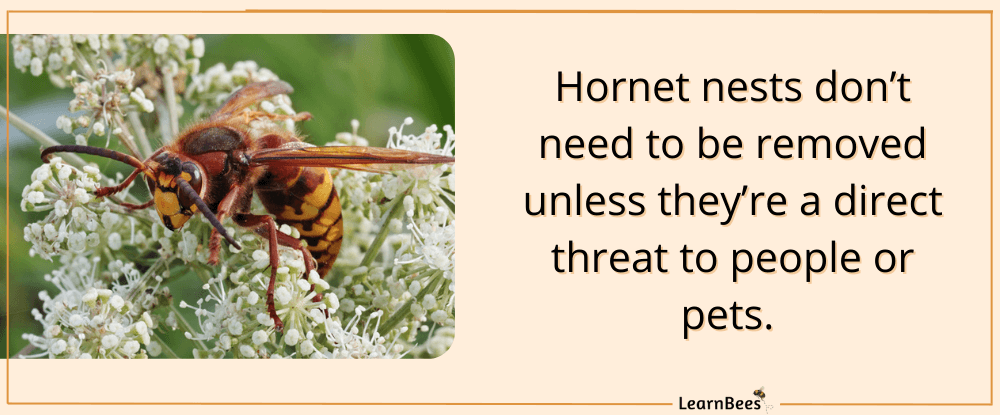
Hornet’s nests do not need to be destroyed unless they’re a direct threat to you, other people, or pets.
The hornet colony will remove themselves naturally as they die off in the fall. Once the nest is abandoned, you can remove it yourself or let it biodegrade on its own. We recommend sealing any cracks or holes to prevent future hornets from nesting again.
Hornets typically aren’t as aggressive as most people think. They tend to keep themselves busy by pollinating and hunting insects like wasps and beetles.(7)
However, hornet nests should be destroyed if they’re located in high-traffic areas. For example, it’s best to remove hornet nests in places where people or pets are located, including areas where you mow the lawn or garden.
We recommend calling pest control for hornet nest removal, especially if you’re allergic to insect stings.
FAQs on Hornets Nests
- What is the fastest way to get rid of a hornet’s nest?
- Do hornets go in their nest at night?
- Will hornets return to a sprayed nest?
- How do you tell if a hornet’s nest is active?
- Will knocking down a hornet nest get rid of it?
- Can hornets nest in the ground?
- How do I prevent hornet nests?
What is the fastest way to get rid of a hornet’s nest?
The fastest way to get rid of a hornet’s nest is to call pest control or attempt removal yourself. You can buy hornet spray and saturate the nest, but that increases the risk of getting stung. We do not recommend this method if you’re allergic to insect stings.
The ideal time to spray a hornet nest is at night when the hornets are less active. First, remove any people or pets from the area.
Additionally, only spray from the ground. Do not spray a hornet nest from a ladder unless you’ve practiced over and over again how you’re going to jump off. We also recommend wearing eye protection and clothing protection.
Unlike honey bees, hornets can sting multiple times without dying. And while hornets are generally passive creatures, they will defend themselves if they’re being sprayed.
Hornets can also be killed using a mixture of dish soap and water. However, hornet sprays are often easier to use since they have nozzles that can spray from long distances.
—> Go back to the FAQs on hornets nests
More to Explore:
- Do Yellowjackets Make Honey or Honeycomb?
- Wasps vs. Honey bees: Are They Different?
- Do Wasps Make Honey?
Do hornets go in their nest at night?
Yes, hornets return to their nests at night. Hornets leave their nests to pollinate and hunt for other insects during the day. Daylight provides hornets with the opportunity to access certain flowers that open with sunlight, as well as catch insects that are only active during that time.
You can often hear a slight buzzing noise from wherever the hornets are nesting. This noise is also a good way to identify a nest.
—> Go back to the FAQs on hornets nests
More to Explore:
Will hornets return to a sprayed nest?
Surviving hornets may return to a newly sprayed nest. However, residual hornet spray will kill them once they touch it. Give the colony at least 48 hours to die before spraying again. The nest may need another spraying if you’re still seeing hornets around the area after 48 hours of the first spray.
Additionally, you can also call pest control to assist with hornet removal. We recommend hiring a professional if the nest is large. Hornet colonies are the biggest during the peak summer season.
—> Go back to the FAQs on hornets nests
More to Explore:
- Do Yellowjackets Sting or Bite?
- Do Hornets Pollinate?
- What’s the Difference Between Wasps, Hornets, and Bees?
How do you tell if a hornet’s nest is active?
Hornet nests are active when you see several hornets flying around the area. This indicates that the hornets are leaving and re-entering the nest, usually to bring back food.
Also, remember that hornets are only active from spring until fall. If you find a hornet’s nest in late fall or winter, it is abandoned because the hornet colony has died off. Hornets do not survive freezing temperatures like honey bees do. This can allow homeowners to seal the nest to prevent future colonies from forming.
Hornets don’t typically inhabit old nests from past years, so it’s unlikely to be active if you find a large hornet nest in early spring.
—> Go back to the FAQs on hornets nests
More to Explore:
Will knocking down a hornet nest get rid of it?
Knocking down an active hornet nest doesn’t guarantee to get rid of it. The hornets may simply rebuild the nest. Also, knocking down an active hornet nest presents you with the risk of getting stung.
You can, however, knock down an empty hornet nest once the hornets have died off in the fall.
If the hornets can be tolerated until winter, it’s much safer to knock down the nest when it’s cold outside, and the colony is gone. You can then spray the area with a repellent—usually peppermint oil, tea tree oil, or hornet spray. Be careful around people and pets.
If you spray empty holes with peppermint or tea tree oil every few months, you’re less likely to get hornets. They dislike the scent, and it also helps keep some spiders away.
—> Go back to the FAQs on hornets nests
More to Explore:
Can hornets nest in the ground?
European hornets typically nest above ground in covered areas like tree hollows or wall voids. They usually live in forests, but they can also be found in suburban areas and parks with sufficient nesting spots.
Underground hornet nests are rare but have been occasionally reported.
—> Go back to the FAQs on hornets nests
More to Explore:
How do I prevent hornet nests?
Hornets are attracted to areas that provide food or adequate shelter. For example, hornets are likely to nest near garbage cans where they can feast on leftover food scraps.
They’re often attracted to sweet foods like ripe fruits, candy, or sugary drinks like juice. Uncovered food, especially protein items like meat, may also grab their attention. This is why keeping the area clean and closing trash lids is important.
Additionally, hornets will crawl inside cracks and crevices around your home’s exterior.
Identifying and solving these attractants can reduce the likelihood of hornets nesting in the area.
